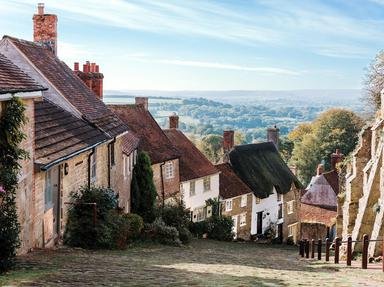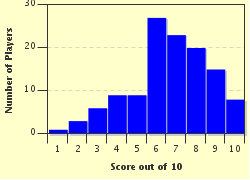Quiz Answer Key and Fun Facts
1. The first gift I consider purchasing is a Union Jack umbrella because I know the British weather can be so temperamental. Which of these is NOT a slang word used by the Brits to describe their climate?
2. Which company first introduced the iconic red bus seen driving around the busy bustling streets of London?
3. Brighton is the most popular destination outside of London for visiting tourists. Which of these attractions, designed by the same people who created the London Eye, opened in 2016?
4. I am tired after visiting many gift shops and so I stop in a tearoom for light refreshments. Which of these sweet treats would I traditionally get served in Bath, Somerset?
5. It is easy to buy a miniature souvenir blue plaque which normally adorn the many English houses to commemorate famous or notable people who lived there. The first plaque was unveiled in 1867 for which prominent figure, famous for writing his epic poem about "Don Juan"?
6. Many uniformed men in London are seen at tourist hotspots in their ceremonial red livery, but which of their organisations dates back the furthest?
7. The next time I visit Blackpool, I intend to buy a stick of rock with letters inside which spell out the name of the seaside resort. Who was credited with inventing this piece of confectionery?
8. Next on my list is a gift to remind me about how stoical the English can be in keeping their stiff upper lip. What was the name of the original poster used during World War Two to raise morale of the British public?
9. My next trip takes me to the dreaming spires within the city of Oxford. What type of gift would I purchase if I visited the Old Sheep Shop in St Aldate's?
10. I found this small metal diecast Vespa scooter in an antique shop off Carnaby Street in London. It reminded me of which British subculture of the 1960s featuring young men who favoured wearing parka jackets with sewn on fabric badges?
Source: Author
Plodd
This quiz was reviewed by FunTrivia editor
agony before going online.
Any errors found in FunTrivia content are routinely corrected through our feedback system.

